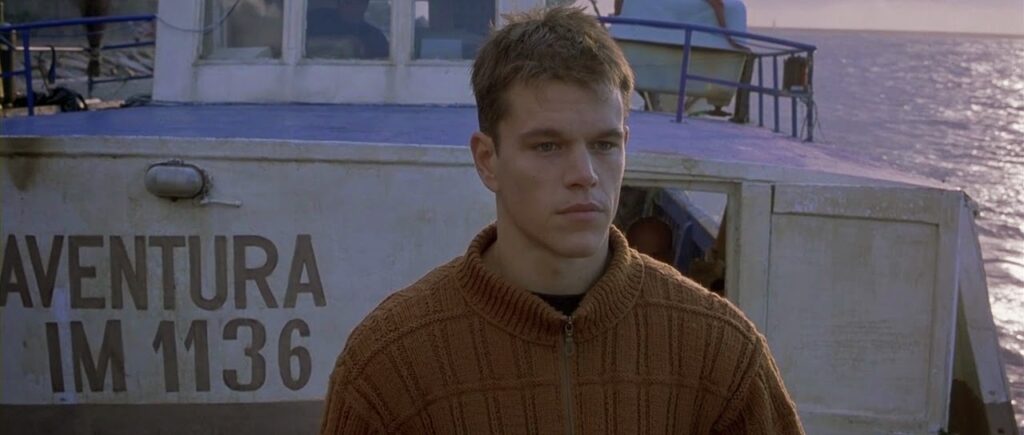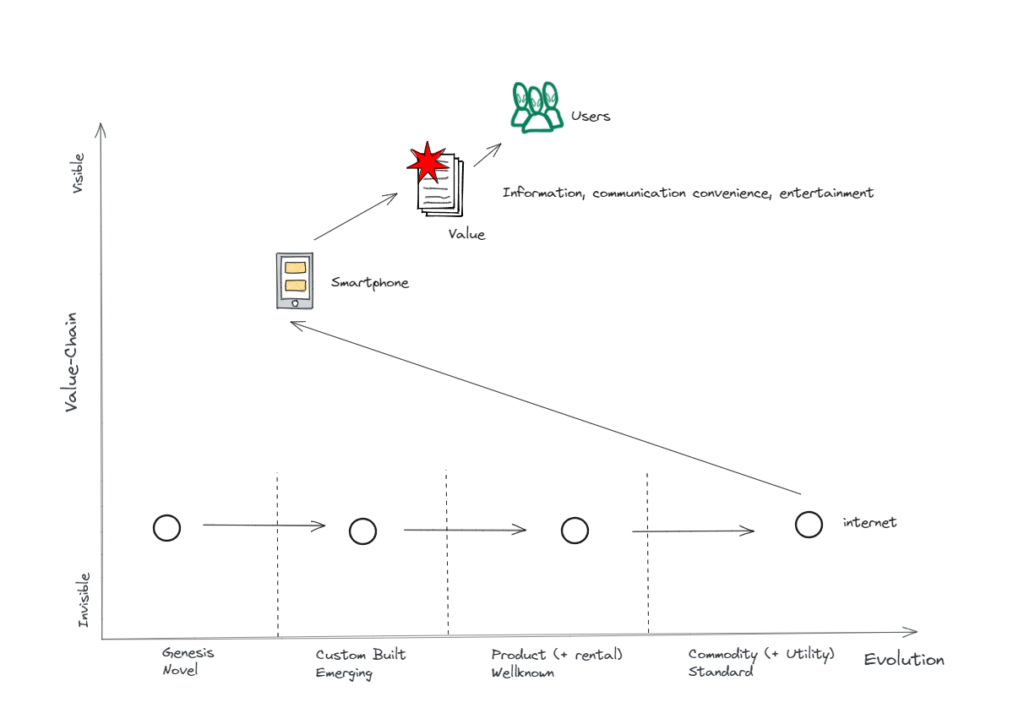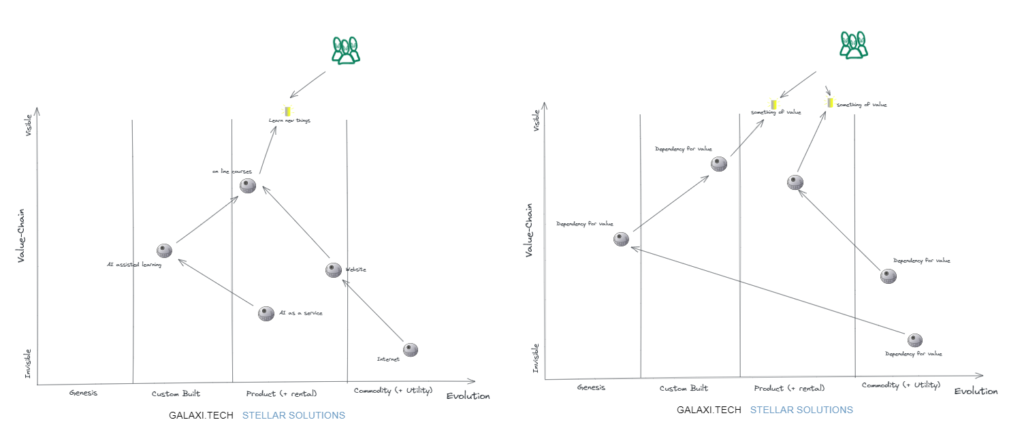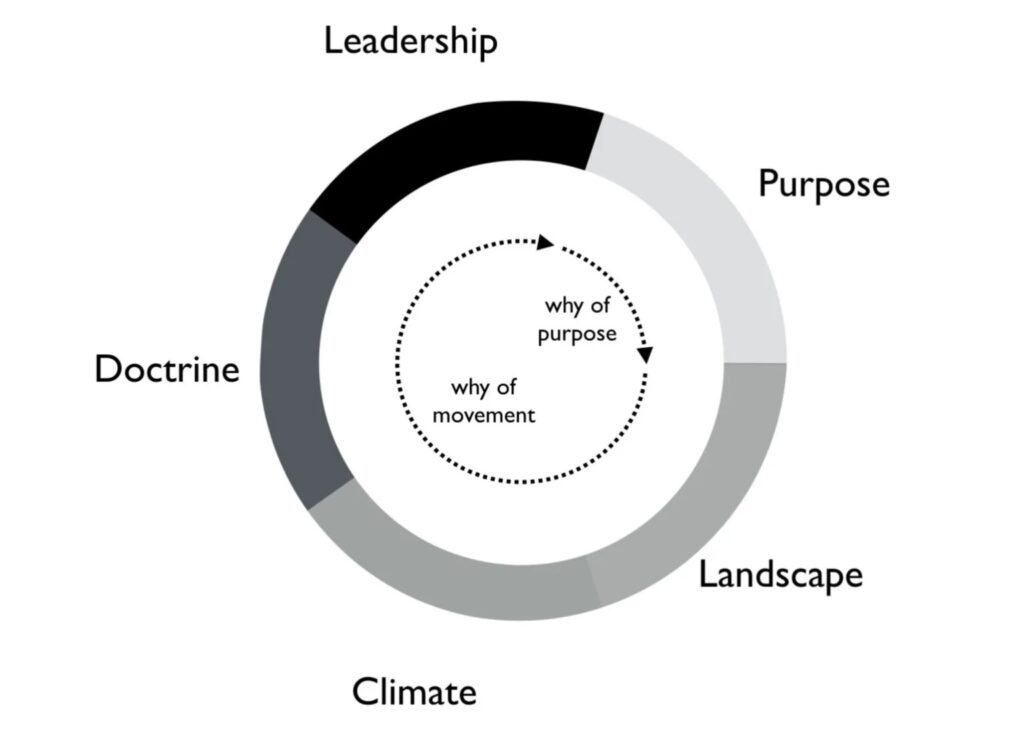Or How strategy is going to be taught at universities in the future.
And what is a tech strategy anyway? It seems to be a kind of thing which any serious company that uses Information Technology (IT) must have? And who doesn’t use IT now adays?
Marc Andreessen wrote the very often quoted post titled Why Software is eating the world. And in case you hadn’t realized that software is in fact eating the world. That article should fix it.

Software is an integral part of most companies now adays and that is why “What is your tech strategy?” is a relevant question to ask.
In this article I will interpret “tech strategy” as the answer to the question “how will you use IT and software to your maximal benefit in your company or organization?”
Tech Strategy versus just strategy!
But why do we say tech strategy? What about the overall company strategy? Are those two different? Do they operate on different planes? I think this is an interesting question!
The current situation
The current situation as in what is the general situation? Is that many companies find them selves in a much more competitive and uncertain world. Where companies previously would survive as long as they didn’t suck much more than other similar companies, they now realize the situation in a globalized market place and therefore find it more urgent to act and change. Because, what they used to do is no longer sustainable.
A New Paradigm
We have all ready found our selves in a new paradigm, namely the “Age of Digital”. The Age of digital is also spoken about as the 4th industrial revolution.
We in Galaxitech find that many companies operate according to truth’s and patterns of ‘yesterday’ or more precisely patterns and practices that was suitable to the industrial revolution of previous centuries.
Companies haven’t even transformed to the reality of that previous paradigm shift. Now they are facing the newest paradigm shift, namely that of Artificial Intelligence evolving from custom built to becoming a commodity.
Pains and anti patterns
So what are the challenges that companies typically struggle with today? Let’s quickly list some of them?
-
- Lack of focus
-
- Inertia of previous success
-
- Technical depth
-
- Copy and paste strategies
-
- Complexity
-
- Sudden competition
-
- Systemic problems supporting unsustainable behavior
-
- Poor leadership
-
- unclear communication
-
- Use of words that has become meaningless.
Balancing opposing forces
If these problems were easy to solve companies wouldn’t be in this situation. These problems are complex, intertwined and coupled. So a fix that solves one problem might worsen another problem.
So how can we illustrate this? We often see 2 by 2 diagrams where the two axes in a two dimensional world can be split into 4 quadrants. The SWOT diagram is one such example.

While this might be useful it also has its limitations. I know you can say that about any model! The golden rule here is to remember the saying.
All models are wrong, but some are useful.
George E.P. Box
I Might add. “Some models are more useful than others”
Simon Wardley in his article named “on being lost” lay out his problem with the existing tools for making business strategies.
Imagine going to war with a SWOT diagram. The way he articulated that, made it sound ridiculous. Who would go to war with a SWOT diagram as their strategy?
In military strategy you would use a real map and take into account the position and movement of the enemy forces, as well as climate and other things.
What to do?

Where should we start?
“Supply and demand governs how products and services evolve on a market place”
Often to many times a tech strategy is regarded as pure technical thing. But this is getting it seriously wrong. A tech strategy must be rooted in deep insight to your problem domain and in user needs. Software design is hard, and we should not fool us self into thinking that complex problems can simply be abstracted away. So let’s wear the product lenses for a moment.
I Suppose this quote starting this section is fairly obvious and something the reader will agree with.
We can illustrate this

A product evolves from invented to being a commodity. (Those that survive of cause). Electricity, telecommunication and the internet has evolved from other things. This then enabled a product like the smart phone. One the next figure we have added the visibility axis to the diagram. Users and their needs. The things that provides value to the user are in the top. The internet and electricity is a dependency of the smart phone, but they are not as visible to the user as the smart phone itself.

We can se that the diagram forms a value chain. Where components more visible to to the user depends on other things less visible to the user.

What We at Galaxitech find immensely useful is how things get more concrete and visual.
This can enable leaders to communicate how things are related. What previously sounded like a HOT AIR STRATEGY like the following, now becomes tangible.
Our strategy is collaborative. We will lead a sustainable effort of the market through our use of value and social media to build a competitive advantage. By being both digital first and open, our networked approach will drive growth throughout the organization. Synergies between our blockchain and ecosystem will enable us to capture the upside by becoming customer focused in an innovative world. These transformations combined with virtual reality due to our data leaders will create a learning organization through insight from data and leaders
http://strategy-madlibs.herokuapp.com/
Maybe you have seen real strategies that sounds similar to this auto generated garbage?
While the real ones might not be that bad. They often suffer from three things:
-
- Being to obvious and impossible to disagree with.
-
- Being wish full about what we like to be or become true.
-
- Being a copy of what every one else do.
I have seen more than one tech strategy that say we want to (be)
-
- Agile
- Scalable
- Secure
- Fulfil the needs of our customers
- Sustainable
- Using the newest technology
- Using cloud
- Using containerization
- Using microservices
- Using AI
- Build a Platform
This gets communicated in short head lines and articles well suited for papers, magazines. Where communication cannot be to detailed. Often something that no one will disagree with.
What I often don’t see is an organization that can communicate what we don’t do and also can dig deeper and explain how things are connected in the specific context of the company.
The diagram or map that we have shown above is called a Wardley Map, after its inventor Simon Wardley.
Simon was with his own words a fake CEO that didn’t know what he were doing. He thought that other CEO’s did. But what they said never really provided an explanation that was satisfying to him. So he invented the Wardley Map. Simon has come to many realizations that he has gladly shared for the rest of us to use.
Simon Says
We need a map to navigate and to communicate a strategy. In a map the relative position and distance between components matters. He also uses the game of chess as an analogy to introduce the concept of the “the two why’s”.
“There is not one but two questions of why in chess. I have the why of purpose such as the desire to win the game but I also have the why of movement as in “why this move over that?””
He also introduces Sun Tzu’s five factors:
- Purpose
- Landscape
- Climate
- Doctrine
- Leadership

Illustration From “on being lost by Simon Wardley
“A Strategy should not only answer the question about the big why! Like in chess we need to check mate the opponent, But we also need to answer the small Why. The why of why we move a particular piece in the chess game”.
Leadership is among other things navigating these 5 factors. And a strategy can be seen as articulating the two whys.
As a Leader you look at your users, their needs. How the value chain is build up of components, how evolved are these components? The Wardley Map helps you visualize this. As a leader you ask questions of the two whys. And you talk about the 5 factors in relation to the map.
Wardley Mapping for business
A relatively new community exists that We would like to point the readers attention to. wardleymapsforbusiness. Check it out there are lots of great recordings and upcomming meetups on the topic of strategy. With real technology experts and real CEO’s
What’s next?
This might have triggered your interest? There are many more concepts in Wardley mapping like
-
- the OODA (Observe, Orient, Deside, Act) loop
-
- Tzung Zu’s five factors Purpose, Landscape, Climate, Doctrine, Leadership
-
- Warldeys lists of Doctrines. Generic rules applicable to any company
-
- List of climatic patterns
-
- List of game plays
These are candidates for further articles
Summary
Use mapping to visualize and communicate about strategy, In a war You would definitely use a map to talk about where the enemy is strong or weak. You would also talk about climate and your own doctrines, the purpose of what you are doing and about leadership. How to navigate and decide in all this. And most importantly. Your tech strategy should be connected with real users and real problems to solve. Tech alone will not do it.







